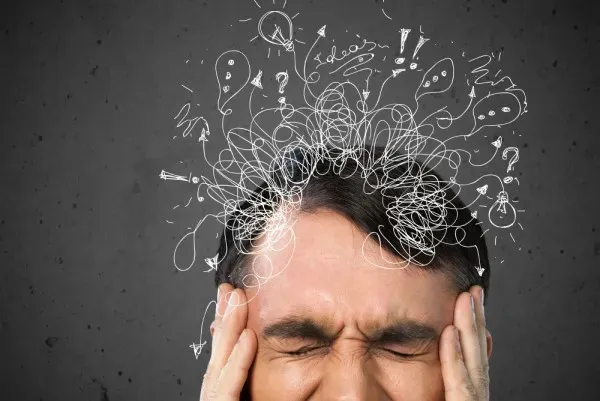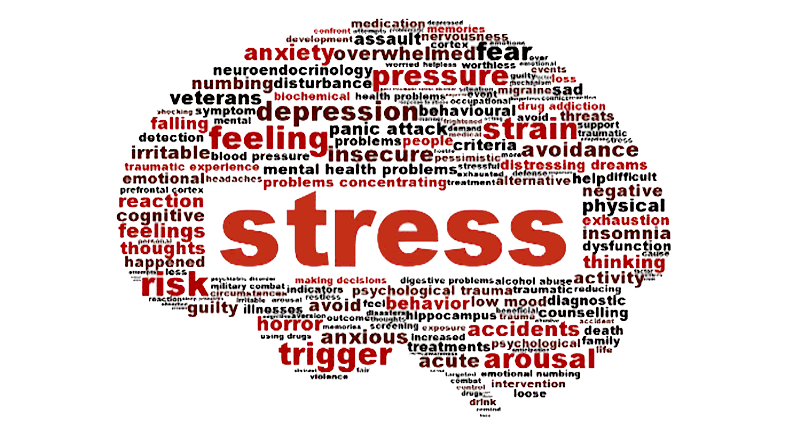Introduction
Depression can feel like an unending loop of low mood, negative thoughts, and withdrawal from life's pleasures. Left unaddressed, it undermines relationships, productivity, and physical health. Breaking free requires understanding both the underlying mechanisms and the proven strategies that interrupt this cycle.
For many individuals, depression is not merely a temporary emotional state but a persistent condition that affects nearly every aspect of life. The good news is that with appropriate intervention and support, even long-standing depression can be effectively managed and overcome. This article provides a comprehensive framework for understanding depression and implementing research-supported approaches to recovery.
What Is Depression?
Depression is more than occasional sadness—it's a clinical condition marked by persistent feelings of hopelessness, loss of interest, and changes in sleep or appetite. It involves biochemical changes in the brain, disrupted thought patterns, and often, a decrease in positive experiences that normally uplift mood. Recognizing these elements helps you see depression not as a character flaw, but as a treatable health condition.
From a clinical perspective, major depressive disorder is diagnosed when an individual experiences five or more specific symptoms nearly every day for at least two weeks. These symptoms typically include:
- Persistent sad or empty mood
- Markedly diminished interest or pleasure in activities
- Significant weight loss or gain
- Insomnia or hypersomnia
- Psychomotor agitation or retardation
- Fatigue or loss of energy
- Feelings of worthlessness or excessive guilt
- Diminished ability to think or concentrate
- Recurrent thoughts of death or suicide
Understanding depression as a medical condition with biological, psychological, and social components helps reduce stigma and encourages appropriate treatment-seeking behavior.
The Cycle of Depression
Depression often self-perpetuates through a feedback loop:
- Negative thoughts ("I'm worthless") fuel low mood.
- Low mood saps motivation, making self-care and socializing harder.
- Reduced activity and isolation reinforce negative self-perceptions.
This cycle can be particularly insidious because each component reinforces the others. For example, when a person withdraws from social activities due to low energy and motivation, they miss opportunities for positive interactions and feedback from others. This isolation often leads to increased negative thinking ("Nobody cares about me," "I have nothing to contribute"), which further deepens the depressed mood.
Similarly, disrupted sleep patterns—whether insomnia or excessive sleep—affect energy levels and cognitive function, making it harder to engage in normal daily activities or maintain perspective on problems. Physical symptoms like appetite changes, headaches, or digestive issues can add another layer of distress.
The good news is that interrupting any link in this chain can weaken the entire cycle. This understanding forms the basis for many effective treatment approaches.
Evidence-Based Strategies for Overcoming Depression
The following approaches have robust research support for lifting mood and restoring function:
| Strategy | Description | Key Benefit | Quick Tip |
|---|---|---|---|
| Cognitive Behavioral Therapy (CBT) | Identifies and reframes unhelpful thoughts | Breaks negative thinking patterns | Use a thought journal to track and challenge beliefs |
| Antidepressant Medication | Balances neurotransmitters (e.g., serotonin) | Provides chemical support for mood regulation | Consult a psychiatrist for tailored prescriptions |
| Behavioral Activation | Schedules rewarding activities | Reintroduces positive experiences | Start with 10-minute walks or hobby time |
| Mindfulness & Meditation | Cultivates present-moment awareness | Reduces rumination and stress | Try a guided 5-minute breathing practice daily |
| Regular Physical Exercise | Boosts endorphins and brain-derived neurotrophic factor | Improves energy and sleep | Aim for 20 minutes of moderate movement 3× weekly |
Cognitive Behavioral Therapy (CBT)
CBT is one of the most extensively researched psychotherapies for depression. It works by helping individuals identify, challenge, and modify negative thought patterns that contribute to depressive symptoms. Through structured sessions with a therapist and practical homework assignments, CBT teaches specific skills for recognizing cognitive distortions (such as all-or-nothing thinking, catastrophizing, or overgeneralizing) and replacing them with more balanced, realistic perspectives.
Antidepressant Medication
For many people with moderate to severe depression, medication plays a crucial role in recovery. Various classes of antidepressants work through different mechanisms, but all aim to rebalance neurotransmitters (chemical messengers) in the brain that influence mood regulation. Finding the right medication often requires patience and close collaboration with a psychiatrist, as individual responses vary. It's important to note that antidepressants typically take several weeks to reach their full effect and should never be stopped abruptly.
Behavioral Activation
This approach focuses on increasing engagement in positive activities, even when motivation is low. By systematically scheduling pleasant or meaningful activities and gradually increasing their frequency, behavioral activation helps break the cycle of withdrawal and inactivity that maintains depression. The emphasis is on action preceding motivation—that is, engaging in activities even when you don't feel like it, with the understanding that positive feelings often follow behavior rather than precede it.
Mindfulness and Meditation
Mindfulness-based interventions teach individuals to observe their thoughts and feelings without judgment, creating distance from negative rumination. Regular practice helps develop greater awareness of thought patterns and the ability to disengage from unproductive mental loops. Research has shown that mindfulness-based cognitive therapy (MBCT) is particularly effective for preventing depression relapse.
Regular Physical Exercise
Exercise has powerful antidepressant effects through multiple mechanisms: it increases endorphin levels, promotes neuroplasticity through BDNF (brain-derived neurotrophic factor) production, reduces inflammation, and improves sleep. Studies consistently show that regular physical activity can be as effective as medication for mild to moderate depression. The key is finding sustainable activities that fit into your lifestyle—walking, swimming, cycling, dancing, or yoga are all excellent options.
Seeking Professional Support
Professional guidance accelerates recovery, especially when depression is severe or long-standing. Psychologists, psychiatrists, and licensed counselors tailor treatment plans that combine therapy, medication, and lifestyle changes. Early intervention not only shortens the duration of depressive episodes but also lowers the risk of relapse.
When seeking professional help, consider the following:
- Types of providers: Psychiatrists can prescribe medication and diagnose mental health conditions; psychologists and therapists specialize in therapeutic approaches; primary care physicians can provide initial assessment and referrals.
- Treatment approaches: Ask potential providers about their experience treating depression and their preferred therapeutic methods.
- Practical considerations: Consider insurance coverage, location, scheduling flexibility, and whether telehealth options are available.
Remember that finding the right professional relationship may take time, and it's perfectly acceptable to try different providers until you find a good fit. The most important factor is that you feel comfortable and supported in your recovery journey.
Building a Sustainable Path Forward
Long-term wellness hinges on integrating healthy habits into daily life:
- Maintain a stable sleep schedule and balanced nutrition.
- Keep a social support network—set regular check-ins with friends or support groups.
- Develop a personalized relapse-prevention plan: identify early warning signs and coping strategies.
Recovery from depression is rarely linear, and setbacks are a normal part of the process. Having a structured plan for maintaining wellness and addressing early signs of relapse provides security and confidence. This plan might include:
- Early warning signs: Identify your personal indicators that mood may be declining, such as changes in sleep, decreased interest in activities, or increased negative thinking.
- Emergency contacts: Keep a list of supportive people to reach out to, including friends, family members, and healthcare providers.
- Self-care toolkit: Develop a personalized list of activities and practices that have proven helpful during difficult times.
Celebrating small wins—like getting out of bed or making a phone call—reinforces progress and motivation. Each positive step, no matter how small, represents a victory over depression and contributes to building momentum toward recovery.
Conclusion
Breaking depression's cycle demands patience, persistence, and often professional collaboration. By combining therapy, behavioral activation, medication when needed, and daily self-care, you can reclaim joy, purpose, and resilience.
The journey through depression is deeply personal, and what works best varies from person to person. However, the evidence-based strategies outlined in this article provide a solid foundation for recovery. With appropriate support and consistent effort, most people can experience significant improvement in their symptoms and quality of life.
Remember that seeking help for depression is a sign of strength, not weakness. By taking that first step toward treatment, you open the door to a more balanced, fulfilling future free from depression's heavy burden.
References
American Psychological Association. (2022). Clinical practice guideline for the treatment of depression across three age cohorts. https://www.apa.org/depression-guideline
Cuijpers, P., et al. (2020). Psychological treatment of depression: A meta-analytic database of randomized studies. BMC Psychiatry, 20(1), 1-16.
Kvam, S., et al. (2016). Exercise as a treatment for depression: A meta-analysis. Journal of Affective Disorders, 202, 67-86.
Segal, Z. V., et al. (2018). Mindfulness-based cognitive therapy for depression (2nd ed.). Guilford Press.
World Health Organization. (2021). Depression fact sheet. https://www.who.int/news-room/fact-sheets/detail/depression



